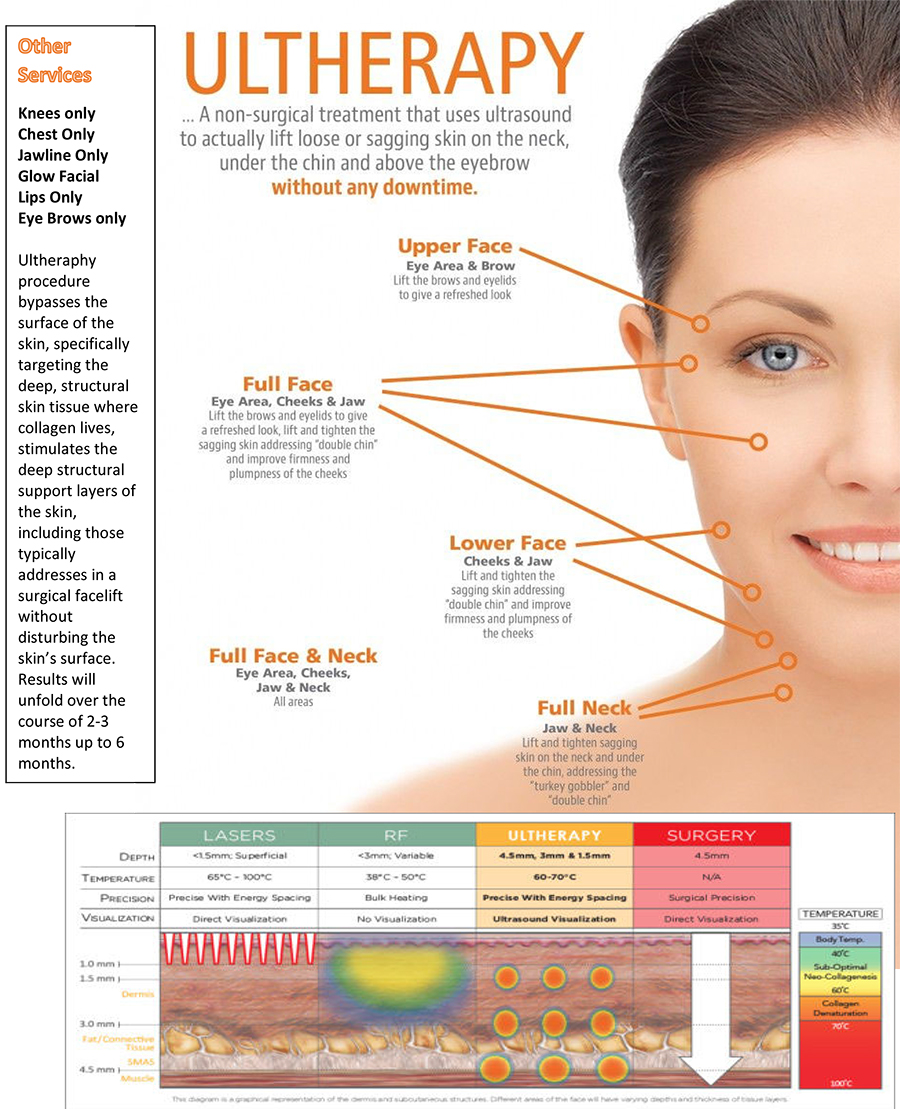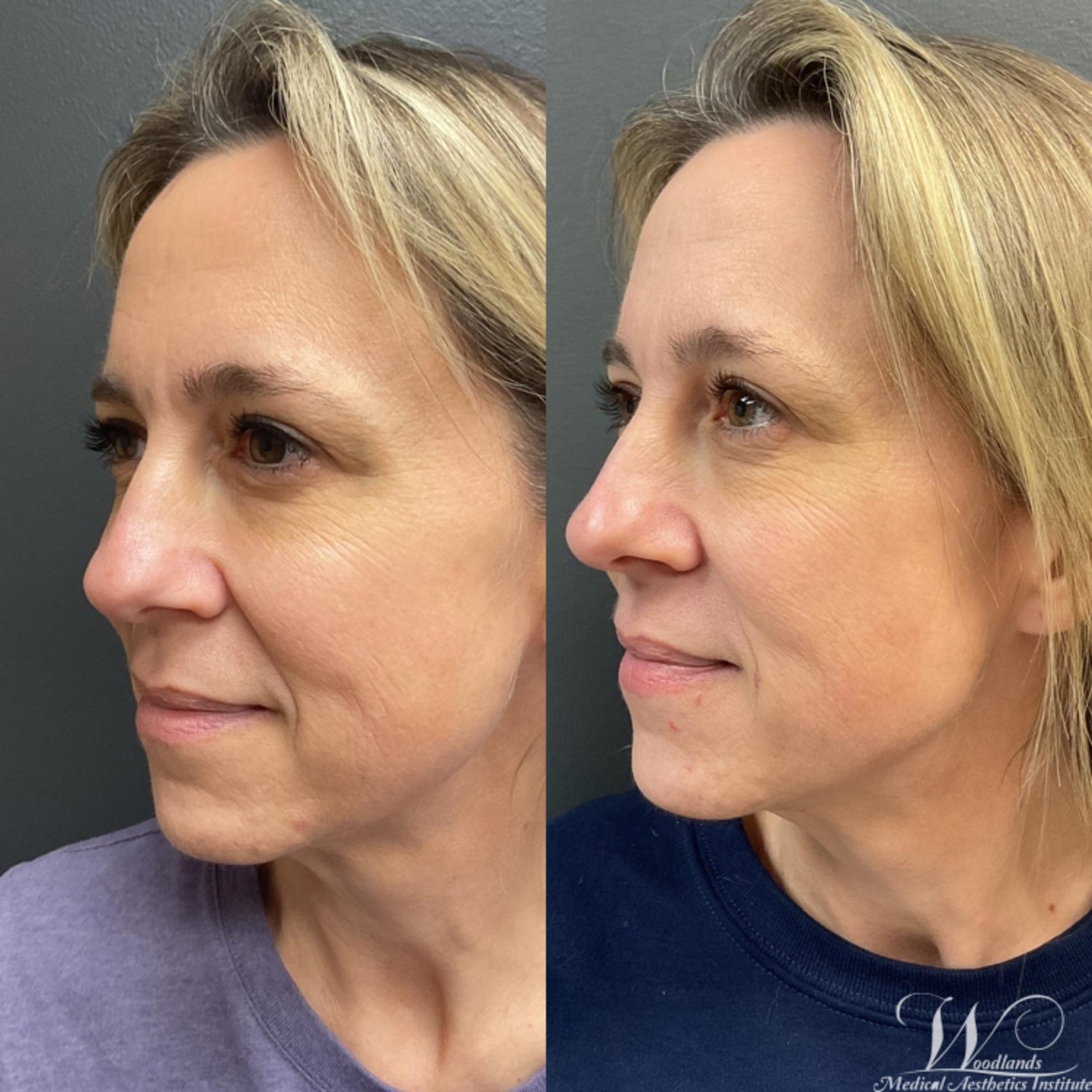Density RF Malaysia: Effective Solutions for Non-Surgical Tightening
Wiki Article
Why Ultherapy May Be Clinically Needed: Exploring the Factors for a Non Surgical Lift
Ultherapy is gaining interest as a sensible option for individuals encountering skin laxity as a result of maturing or specific medical problems. This non-surgical therapy stimulates collagen manufacturing, supplying an option that stays clear of the healing time connected with intrusive procedures. As people seek to enhance not only their look but also their overall skin health, comprehending the situations that necessitate Ultherapy's usage comes to be necessary. What aspects contribute to its medical requirement?Understanding Ultherapy: What It Is and How It Functions
Ultherapy, a non-invasive cosmetic procedure, utilizes ultrasound technology to stimulate collagen production and advertise skin firm. By providing focused ultrasound power deep right into the skin, it targets the foundational layers usually resolved in medical renovations. This procedure encourages the body's natural healing response, resulting in progressive lifting and tightening of the skin in time.
Treatment sessions typically last between 30 to 90 mins, relying on the dimension of the area being treated. While results might not be immediately visible, perfect results usually appear within 2 to 3 months as collagen continues to create. Ultherapy deals an engaging non-surgical option for people looking for skin renewal without the demand for intrusive procedures.
The Aging Process: Impacts on Skin Flexibility and Collagen
Aging inevitably brings changes that lessen skin elasticity and collagen manufacturing, leading to noticeable indicators of sagging and creases. As individuals age, the skin's capacity to retain moisture declines, causing a drier and less durable surface. Collagen, a vital protein responsible for skin structure, also diminishes, causing the skin to lose its suppleness and vibrant appearance. Aspects such as sun exposure, toxic wastes, and way of living selections better increase this decline in skin quality.This loss of elasticity and collagen creates a waterfall of modifications, consisting of the development of jowls, deepening nasolabial folds, and a total sagging appearance. The skin's support system weakens, making it a lot more susceptible to the effects of gravity. Many people seek treatments like Ultherapy to combat these aging effects, aiming to bring back a much more youthful, taut appearance without the demand for invasive surgical treatments.
Clinical Problems That May Take Advantage Of Ultherapy
Ultherapy is increasingly identified for its prospective benefits in attending to numerous clinical problems. Individuals experiencing skin laxity, those in post-surgical recovery, and patients with persistent skin problems may discover this non-invasive treatment useful. By boosting collagen production, Ultherapy can improve skin suppleness and improve overall appearance for these groups.
Skin Laxity Issues
Skin laxity can be a substantial issue for people experiencing various medical problems that affect the integrity and elasticity of their skin. Problems such as Ehlers-Danlos disorder, which interrupts collagen manufacturing, can lead to premature skin aging and drooping. In addition, individuals with autoimmune disorders may experience skin changes that add to laxity. Hormonal variations, particularly throughout menopause, also play a function in reducing skin firmness. Ultherapy, using ultrasound modern technology, targets the much deeper layers of skin, stimulating collagen production and tightening up the affected areas. This non-invasive therapy may provide a feasible service for those looking for to address skin laxity resulting from these clinical conditions, boosting both look and self-worth without the demand for surgical intervention.Post-Surgical Recuperation Aid
Post-surgical recovery can frequently present obstacles, specifically for individuals experiencing skin laxity due to medical treatments. Ultherapy offers as a possible aid in this situation, making use of ultrasound modern technology to stimulate collagen manufacturing and boost skin rigidity without invasive treatments. Patients that have gone through surgical procedures such as renovations, lipo, or various other body contouring treatments might find that Ultherapy boosts their healing by dealing with irregular texture and laxity that can happen post-operation. This non-surgical strategy can lead to boosted visual outcomes, possibly lowering the demand for extra medical treatments. Furthermore, it may assist alleviate pain associated with the recovery procedure, offering people a much more comprehensive healing experience. Subsequently, Ultherapy can be a useful option in post-surgical care.Chronic Skin Problem
For people suffering from persistent skin problems such as acne marks, rosacea, or laxity because of aging, non-invasive therapies may offer substantial relief and renovation. Ultherapy has become an encouraging option, making use of ultrasound technology to stimulate collagen production deep within the skin. This process can enhance skin texture and elasticity, resolving problems like irregular complexion and drooping. Particularly, those with rosacea might experience minimized soreness and inflammation, while people with acne marks can gain from improved skin level of smoothness and total look. Importantly, Ultherapy gives a non-surgical choice that decreases recuperation time and risks connected with intrusive procedures, making it an enticing choice for individuals seeking efficient management of persistent skin problems.Emotional Influence of Sagging Skin and Visual Concerns
The psychological toll of aging usually shows up in the type of sagging skin, which can significantly impact a person's self-worth and overall psychological well-being. Lots of people associate younger looks with energy and good looks, bring about sensations of insufficiency when faced with noticeable indicators of aging. This perceived decrease in charm can cause social stress and anxiety, withdrawal from social communications, and a boosted preoccupation with one's appearance.Individuals might feel compelled to look for visual therapies to fight these worries, as the wish to keep a younger look can end up being intertwined with individuality. The emotional results of sagging skin might also lead to anxiety or a decreased quality of life. As a result, non-surgical choices like Ultherapy become prospective remedies, aiming not just to renew the skin yet also to restore confidence and a favorable self-image, inevitably addressing the deeper emotional ramifications of aging.
Comparing Ultherapy to Traditional Surgical Options
When contrasting Ultherapy to conventional medical options, significant distinctions arise in both cost-effectiveness and Full Article recuperation time. Ultherapy deals a non-invasive method that typically results in reduced costs and minimal downtime for patients. In contrast, medical lifts generally call for even more monetary investment and a prolonged recovery duration.Cost-Effectiveness of Ultherapy

Traditional medical lifts typically come with significant ahead of time prices and prolonged recovery times, Ultherapy offers an engaging option that can supply equivalent outcomes at a portion of the rate. The average cost of a medical facelift can vary from $7,000 to $15,000, while Ultherapy therapies commonly fall between $2,000 and $4,500, depending on the location dealt with and copyright competence. Additionally, the lack of substantial pre-operative analyses and post-operative treatment connected with Ultherapy better contributes to its cost-effectiveness. This strategy not only decreases monetary strain however likewise allows patients to purchase other aspects of their wellness and well-being. This way, Ultherapy becomes a financially sensible alternative for those looking for facial renewal without the worries of standard surgical procedure.
Recuperation Time Comparison
Healing time is a considerable variable in the decision-making process for those considering cosmetic procedures. Ultherapy stands out as a non-surgical alternative that usually calls for marginal downtime. Many patients can return to their day-to-day tasks practically instantly, experiencing just mild inflammation or swelling that usually deals with within a couple of hours. On the other hand, standard surgical choices, such as renovations, commonly demand a prolonged healing period. Patients may encounter a number of weeks of swelling, bruising, and limited task, with some returning to typical routines taking up to three months. This raw distinction in recuperation time makes Ultherapy an appealing option for individuals looking for efficient results without the comprehensive aftercare related to surgery, permitting a smoother change back to everyday life.The Long-Term Benefits of Non-Invasive Treatments for Skin Health
As people increasingly seek options to surgical procedures, the lasting benefits of non-invasive therapies for skin health end up being a lot more obvious. Therapies such as Ultherapy, chemical peels, and laser treatment deal substantial advantages without the requirement for substantial healing times associated with surgical procedure. Non surgical facelift Malaysia. With time, these non-invasive choices can advertise collagen manufacturing, bring about firmer skin and a more vibrant appearanceFurthermore, normal non-invasive therapies can boost skin appearance, tone, and flexibility, improving overall skin health and wellness. Patients usually experience fewer complications and side impacts, making these procedures much more attractive.
The collective results of consistent treatments can sustain and lengthen aesthetic improvements, enabling individuals to preserve their wanted look with minimal downtime. By prioritizing visit this site right here non-invasive techniques, individuals can accomplish enduring outcomes while prioritizing their health and well-being. Eventually, the lasting benefits of such techniques underscore their expanding appeal in modern skin care.
Often Asked Questions

The length of time Does an Ultherapy Session Normally Take?
An Ultherapy session commonly lasts between 30 to 90 minutes, depending upon the therapy location. Variables such as the person's details requirements and the degree of the procedure can influence the overall period.
Exist Any Type Of Side Impacts Connected With Ultherapy?
Ultherapy can cause adverse effects such as short-lived redness, swelling, or tenderness in the treated area - Density RF Malaysia. While the majority of people experience marginal pain, it is important to get in touch with a specialist for individualized recommendations and possible responsesExactly How Quickly Can I See Outcomes After Treatment?
Results from Ultherapy typically begin to show up within a couple of months post-treatment. The complete impacts might proceed to establish over 6 months as collagen manufacturing increases, bring about recognizable lifting and tightening up of the skin.
Is Ultherapy Suitable for All Skin Kinds?
Ultherapy is typically ideal for different skin types, including lighter and darker tones. Private skin problems and worries may impact its performance, making examinations with a certified expert necessary for customized referrals.Just How Frequently Should Ultherapy Treatments Be Repeated?
Ultherapy treatments are generally advised every 6 to one year, depending on individual skin disease and preferred outcomes. Routine analyses by read what he said a certified expert can assist determine the most effective frequency for maintenance and effectiveness.Report this wiki page